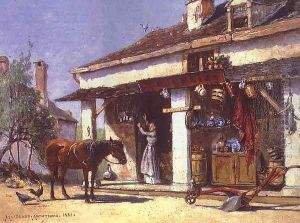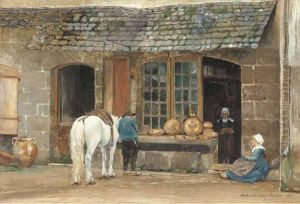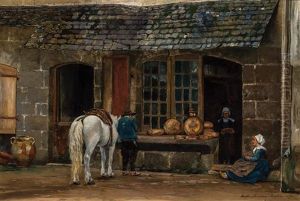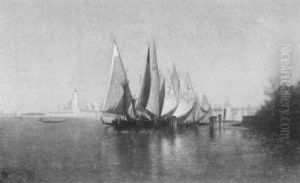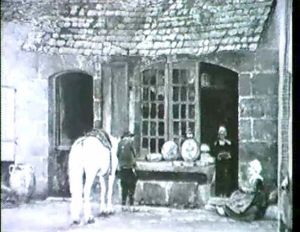David Maitland Armstrong Paintings
David Maitland Armstrong was an influential American artist, designer, and diplomat born on April 15, 1836, in Newburgh, New York. He is best known for his work in stained glass and his contributions to the American Aesthetic Movement. Armstrong came from a well-to-do family and initially pursued a career in law, graduating from Columbia College in 1860. However, his passion for art led him to change his career path.
Armstrong developed an interest in stained glass after a trip to Europe where he was exposed to the medium's potential. He visited England, France, and Italy, learning about the European art scene, which was experiencing a revival in stained glass craftsmanship. Upon returning to the United States, he dedicated himself to the art form, becoming a leading figure in its American revival. Armstrong worked with renowned glass manufacturers and artists, such as Louis Comfort Tiffany, with whom he collaborated on several projects.
In addition to his artistic pursuits, Armstrong had a notable career as a diplomat. He served as the United States Consul to Rome from 1873 to 1877, and later as the Consul General, a position that allowed him to immerse himself in Italian art and culture. This experience greatly influenced his artistic style and his approach to glasswork.
Armstrong's contribution to the art of stained glass is significant. He was a key figure in the development of opalescent glass and was known for his innovative techniques, which included the use of multiple layers of glass to create depth and richness in color. His works were characterized by their exquisite detail and vibrant hues, often depicting lush landscapes, floral designs, and allegorical scenes.
Armstrong's stained glass can be found in various locations across the United States, including churches, private homes, and institutions. His pieces are celebrated for their beauty and craftsmanship and are considered important examples of American decorative arts from the late 19th and early 20th centuries.
David Maitland Armstrong passed away on May 8, 1918, leaving behind a legacy as a master of stained glass art and a proponent of aesthetic beauty in functional objects. His life and work continue to be studied and appreciated by art historians, collectors, and enthusiasts of stained glass.
